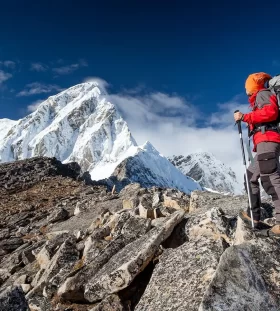Elevate your adventure: Tips for successful trekking and climbing in mountainous terrain
Trekking and climbing in mountainous terrain offer a unique blend of physical challenge and awe-inspiring natural beauty. From the rugged trails of the Rockies to the towering peaks of the Alps, each journey promises unforgettable experiences. However, venturing into such landscapes requires careful preparation and knowledge.
This article will explore essential tips to ensure a safe and successful adventure in mountainous regions.
Table of Contents
Prioritize physical conditioning
Mountainous terrain demands physical fitness that surpasses standard hiking or outdoor activities. Long ascents, steep descents, and the effects of high altitudes necessitate a robust cardiovascular system and well-conditioned muscles. Regular cardiovascular exercises like jogging, cycling, and stair climbing can significantly improve your endurance. Strength training focusing on core, leg, and upper body muscles will provide the necessary power for tackling steep slopes and rocky terrains.
Consider simulating the conditions you’ll face during your trek or climb. Practice carrying a loaded backpack on inclines to accustom your body to the weight and prepare for the real challenges ahead. Prioritizing physical conditioning is fundamental to enjoying the journey and ensuring your safety in the mountains.
A great place to practice is Aconcagua, towering as the highest peak outside of Asia, offering trekkers a thrilling challenge in the heart of the Andes. With its breathtaking vistas and formidable terrain, Aconcagua treks attract adventurers from around the globe. Guided by experienced mountaineers, these treks provide an opportunity to test one’s mettle in a high-altitude environment, making it an unforgettable experience for those seeking to conquer the heights of South America.
Equip yourself with proper gear
The right gear can make all the difference in mountainous adventures. Start with appropriate footwear—a sturdy pair of hiking boots with excellent ankle support and a reliable grip are paramount. Invest in moisture-wicking, layered clothing to regulate your body temperature and protect against sudden weather changes. Carry a waterproof and windproof outer layer to shield yourself from the elements.
Other essential equipment includes:
- A high-quality backpack.
- Trekking poles for balance and stability.
- A reliable navigation tool like a map and compass.
- A first aid kit for outdoor activities.
Consider the need for specialized gear for climbing, such as harnesses, carabiners, and helmets. Having the right equipment ensures your comfort and contributes significantly to your safety.
Understand altitude and acclimatization
Lower oxygen levels can lead to altitude sickness, a potentially dangerous condition characterized by headaches, nausea, and dizziness. To mitigate this risk, engage in a gradual acclimatization process. Spend a few days at intermediate altitudes before ascending further. This allows your body to adapt to the reduced oxygen levels and reduces the likelihood of altitude-related issues.
Stay well-hydrated and monitor your physical condition closely. If symptoms of altitude sickness appear, descend immediately. It’s crucial to be aware of your body’s signals and prioritize your health over reaching a specific destination. Proper acclimatization is critical to a successful and safe mountainous adventure.
Plan thoroughly and know your route
A well-structured plan is essential for any trek or climb in mountainous terrain. Familiarize yourself with the area, study maps, and research the specific challenges and features of the route you intend to take. Understand the landscape, including potential hazards like crevasses, rockfalls, and river crossings.
Be aware of weather patterns in the region and plan your journey accordingly. Sudden weather changes can be complicated in mountainous terrain. Carry adequate food, water, and emergency provisions, and inform someone of your itinerary and expected return time. Having a detailed plan and sharing it with a trusted contact ensures that help can be summoned.
Foster teamwork and communication
Whether trekking with a group or climbing in a team, effective communication and teamwork are paramount. Establish clear lines of communication and ensure everyone understands the plan, roles, and responsibilities. Encourage open dialogue about individual concerns and conditions, fostering an environment where safety is prioritized.
Trust your teammates and be aware of their well-being. Look out for signs of fatigue, altitude sickness, or any other issues that may arise during the journey. Mutual support and vigilance can make all the difference in navigating the challenges of mountainous terrain.
To that end
Trekking and climbing in mountainous terrain offer unparalleled experiences for those seeking adventure and natural beauty. However, success in such endeavors requires careful preparation and a deep understanding of the unique challenges posed by these environments. By prioritizing physical fitness, equipping yourself with the right gear, understanding altitude and acclimatization, planning thoroughly, and fostering teamwork and communication, you can elevate your mountainous adventure into a safe and unforgettable journey. Remember, the mountains are waiting, and with the right approach, you can conquer them and create memories that will last a lifetime.
Embarking on a trek or climb in mountainous terrain is not merely an adventure but a journey of self-discovery and triumph. By incorporating these essential tips into your preparations, you can confidently approach the peaks, knowing that you have taken every measure to ensure a safe and successful expedition. So, gear up, step into the wild, and let the mountains inspire you to new heights of achievement and wonder.

